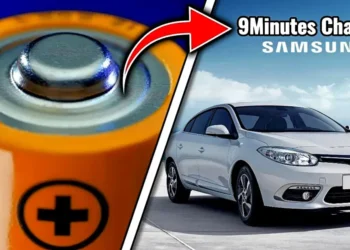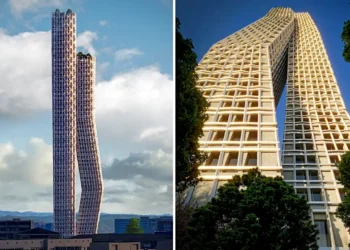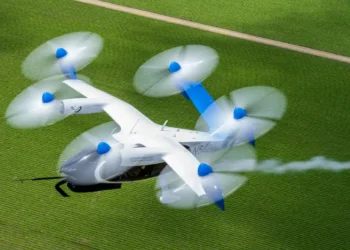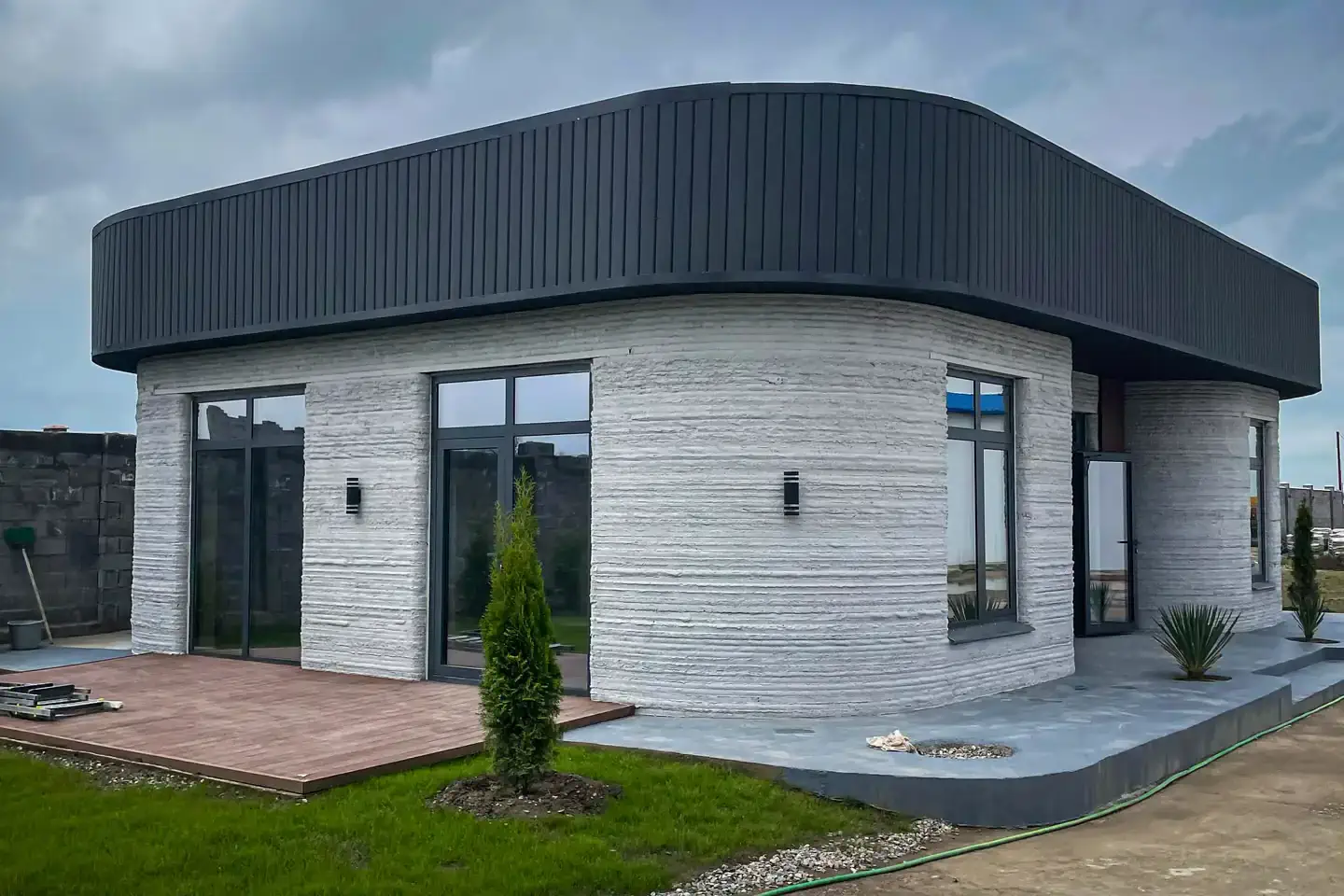
- BM Partners finishes Central Asia’s inaugural 3D printed house in Almaty, Kazakhstan, meeting stringent seismic standards.
- Employing robust concrete typically reserved for skyscrapers and bridges, along with other seismic measures, the structure is designed to endure Richter 7 earthquakes.
- The entire construction, spanning 100 m2 (1076 SF), is completed in under two months, with wall printing accomplished in only five days.
- The building contains expanded polystyrene concrete for insulation to address Kazakhstan’s extreme temperature fluctuations.
Central Asia’s first 3D-printed house has been completed in Almaty, Kazakhstan. The main structure was printed in just five days, and the entire house was finished within two months.
This house was created by BM Partners using COBOD’s BOD2 model, which also built Europe’s largest data center.
This newly completed project shows that 3D-printed homes can withstand extreme weather and seismic conditions. It was also much cheaper than a traditional brick-and-mortar home.
Earthquake-Resistant Design
BM Partners completed the project, designing the building to withstand earthquakes up to a magnitude of 7 on the Richter scale. This was achieved using extra-strong concrete, typically used in constructing skyscrapers and bridges.

The house, which remains unnamed, covers a floor area of 1,076 square feet (100 square meters) and is built to endure the region’s extreme temperature variations. It features expanded polystyrene concrete for insulation.
Construction Technology
While the concept of 3D-printing houses has been around for some time, recent technological advancements have made it a viable option.
This innovation has the potential to transform the construction sector, making housing more affordable and attainable, particularly in regions where traditional building methods are costly or time-intensive.
This innovative house, developed by BM Partners, was constructed using a COBOD BOD2 model, the same technology used to build Europe’s largest data center.
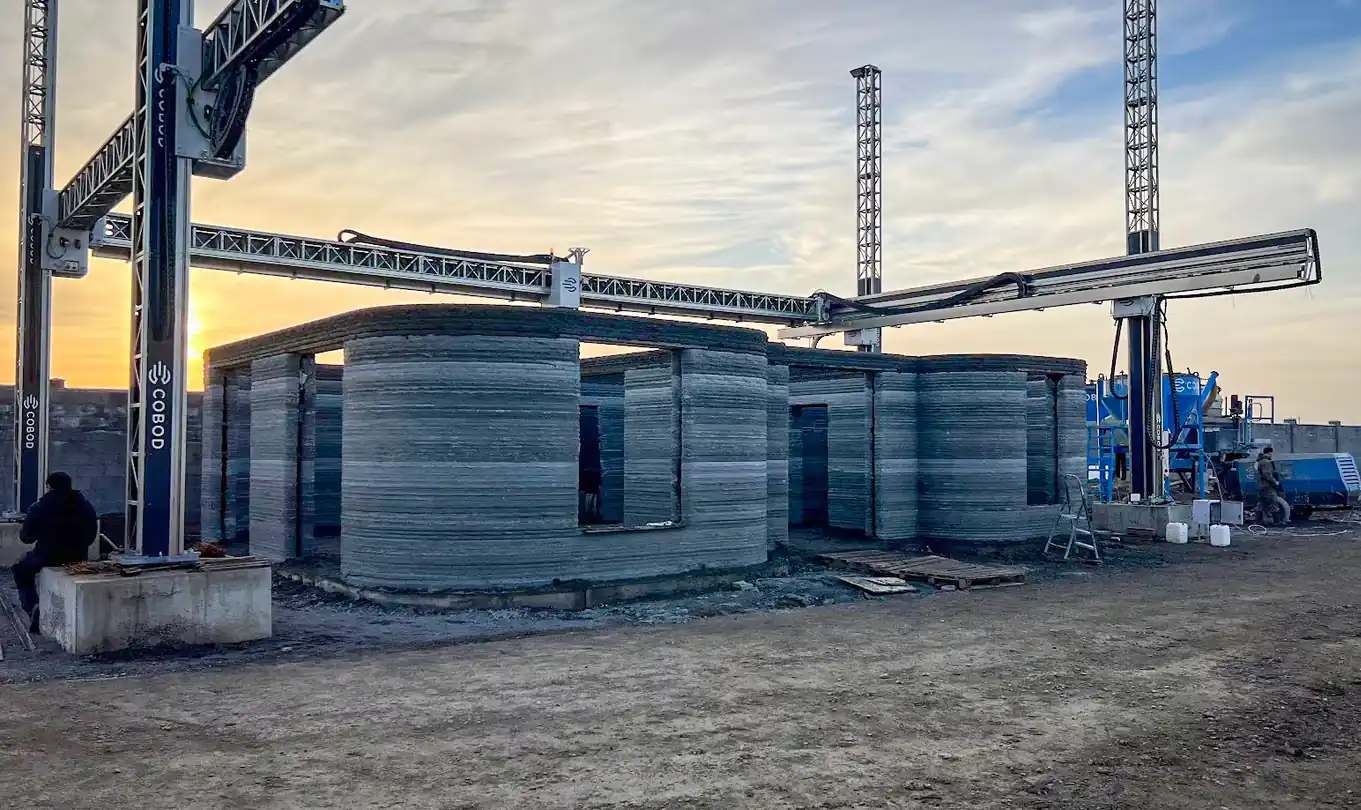
Surprisingly, the entire project was finished in under two months, from setting up the printer to completing the interior and furnishings. Impressively, the walls were 3D printed within just five days, and an extra two days were allotted for installing a seismic beam belt to comply with local building regulations.
This reinforced concrete envelope, surrounding the entire building, is crucial for strengthening structural stability, particularly in regions prone to earthquakes. The beam belt forms the distinctive upper section of the building.
Technological Advancements
BM Partners used a high-strength concrete mix with a compression strength of nearly 60 MPa (8500 PSI) for the main structure, far surpassing the 7-10 MPa (1015-1450 PSI) typical of traditional brick and stone in Kazakhstan.
This mixture, developed by COBOD International and Cemex, includes locally sourced cement, sand, gravel, and the D.fab admixture.
According to COBOD, this technology allows for custom concrete blends tailored to the needs of different regions.

In Kazakhstan’s extreme climate, ranging from -135 to +120 degrees Fahrenheit (-57 to +49 degrees Celsius), the building uses expanded polystyrene concrete for wall insulation, enhancing thermal and acoustic performance.
After the walls were completed, human builders installed windows, doors, and furniture. The entire project, from printer setup to final furnishings, was finished in just two months.
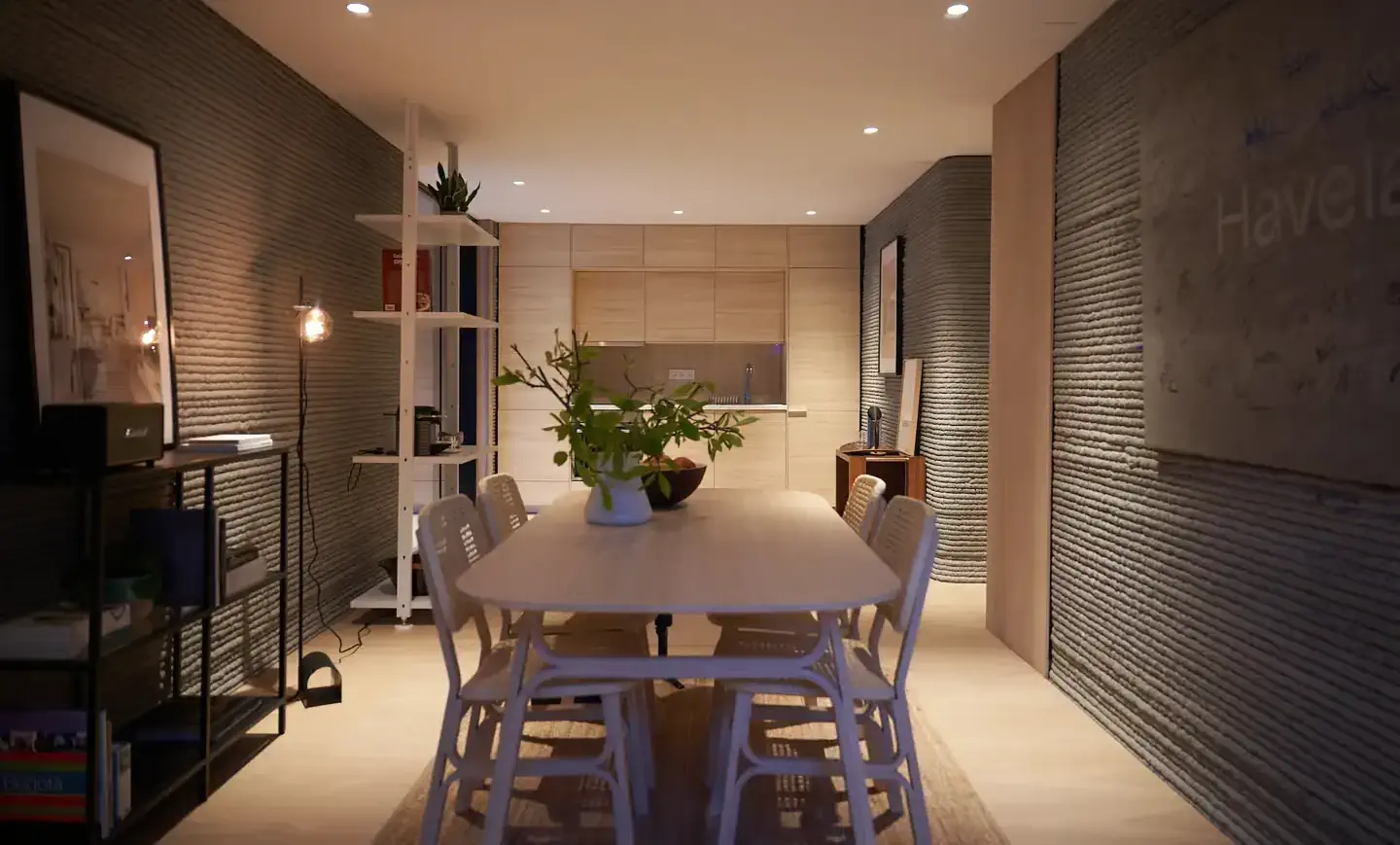
The house has a simple layout with large windows and a spacious living room. It will now serve as a showroom to showcase the capabilities of 3D-printed construction.
Cost and Economic Impact
According to New Atlas, the home costs around €20,500 (approximately $21,800), significantly less than the local average. This cost-effective approach promises quicker, more economical, and sustainable construction outcomes.
COBOD’s Global Impact
COBOD leads the world in providing 3D printers for construction, with over 80 printers deployed across North and Latin America, Europe, the Middle East, Africa, and Asia-Pacific.
Their goal is to transform construction using versatile robots equipped with 3D printing technology, aiming to automate half of construction processes. This approach promises quicker, more economical, and sustainable outcomes, with greater flexibility in design.
COBOD’s 3D printers have played a crucial role in constructing buildings ranging from homes, offices, and public facilities to sports arenas and schools on all six inhabited continents.


